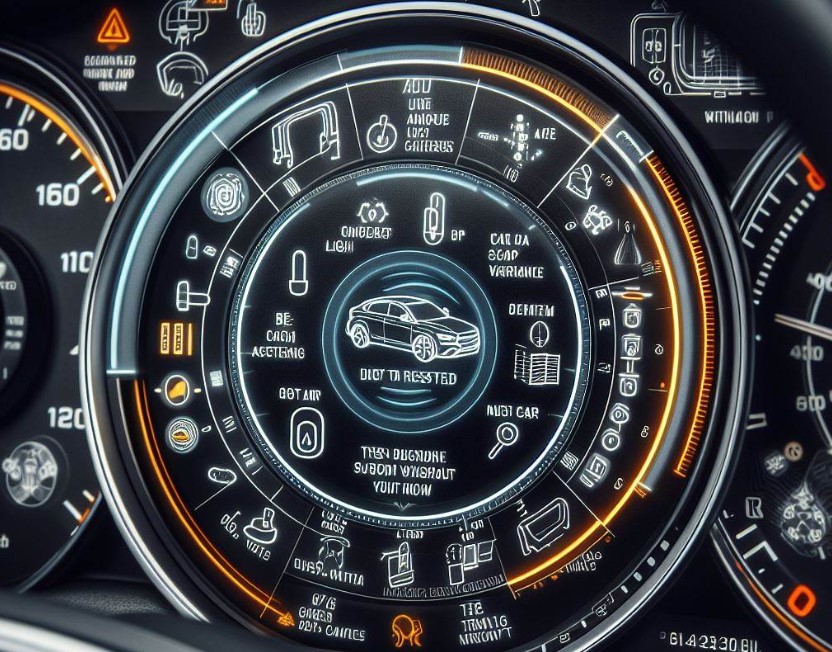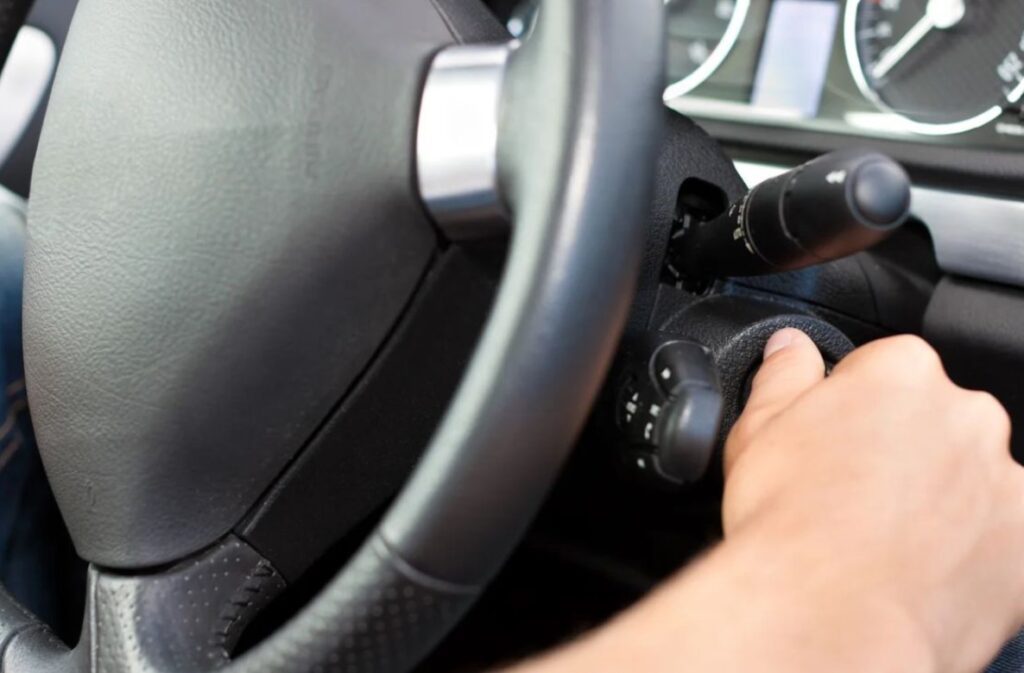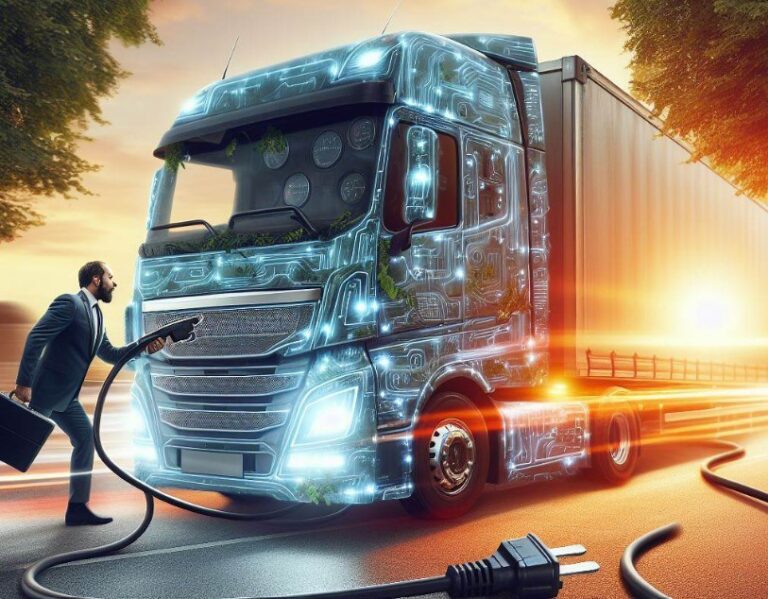How Do You Reset TPMS If There Is No Button? 8 Steps
This article will explain How Do You Reset TPMS If There Is No Button? The innovation of push start systems has transformed the automotive experience, offering convenience and advanced functionality. Understanding how to turn on ignition without starting the engine with a push start system is essential for drivers seeking to utilize their vehicle’s features without engaging the engine.
Key Takeaways
- Understanding the mechanism of push start systems.
- Steps to turn on the ignition without starting the engine.
- Safety considerations during the process.
- Differences between traditional keys and push start systems.
How Do You Reset TPMS If There Is No Button?
Resetting the Tire Pressure Monitoring System (TPMS) in a vehicle that doesn’t have a dedicated reset button involves a series of steps. The process can vary slightly depending on the make and model of the vehicle. Here’s a general guideline for resetting TPMS without a button:

- Check Tire Pressure: Before starting the reset process, ensure that all tires, including the spare (if it has a sensor), are inflated to the recommended pressure. This information is usually found on a sticker inside the driver’s door jamb or in the vehicle’s manual.
- Turn the Ignition to ‘On’: Without starting the engine (to prevent it from idling), turn the ignition to the ‘On’ position. In vehicles with a push-button start, press the button without pressing the brake pedal.
- Wait for the TPMS Light to Blink: Some vehicles have a TPMS light on the dashboard that blinks when the system is in a ‘learn’ mode. This may take a few minutes to activate.
- Drive the Vehicle: If the vehicle does not automatically go into ‘learn’ mode, driving it for a bit may be necessary. Some systems require the vehicle to be driven at a certain speed (usually under 50 mph) for a certain period (often around 10-20 minutes). This allows the sensors in the wheels to reset and recalibrate.
- Turn the Car Off and Back On: After driving, turn the vehicle off and then start the engine again. This can prompt the TPMS to reset.
- Check for a Reset in the Vehicle’s Menu: In some vehicles, the TPMS reset option is available in the onboard computer menu. You may need to navigate through the vehicle’s settings (using the dashboard buttons or touchscreen interface) to find and select the TPMS reset option.
- Consult the Owner’s Manual: Since TPMS reset procedures can vary, consulting the owner’s manual for your specific vehicle is essential. The manual will provide the exact steps for your car’s make and model.
- Visit a Professional if Needed: If the above steps don’t work, it might be necessary to visit a mechanic or tire shop. They have specialized tools (like a TPMS reset tool) that can manually reset the system.
It’s important to note that TPMS is a critical safety feature. It’s designed to alert you when a tire is significantly under-inflated, potentially preventing accidents. Therefore, maintaining proper tire pressure and ensuring the TPMS is functioning correctly is important for safe driving.
Understanding Push Start Systems
Push start systems have revolutionized the way we interact with our vehicles. This technology allows for keyless entry and engine start, simplifying the process of operating a car. To understand how to use this feature without starting the engine, it’s crucial to grasp the system’s basics.
Mechanics of Push Start
Unlike traditional key ignition systems, push start relies on a button press to activate the vehicle’s systems. The car detects the key fob’s presence, enabling the start button functionality. This system integrates security and convenience, ensuring that only the fob holder can operate the vehicle.
Advantages over Traditional Keys
Push start systems offer several benefits over conventional key ignitions. They provide enhanced security, as the vehicle can only be started with the specific fob present. Additionally, these systems often come with advanced features like remote start and vehicle diagnostics, enhancing the overall driving experience.
Steps to Activate Ignition without Engine Start
Activating the ignition of a push start vehicle without starting the engine is a straightforward process. This functionality is particularly useful for using the car’s radio, charging devices, or utilizing the dashboard display without engaging the engine.

Initial Step: Fob Positioning
Ensure that the key fob is inside the vehicle, preferably within the designated detection area. The system must recognize the fob’s presence to allow ignition activation.
Button Press Sequence
To activate the ignition without starting the engine, press the push start button without depressing the brake pedal. In most vehicles, a single press activates the accessory mode, while a second press turns on the ignition without starting the engine.
Safety Considerations
While activating the ignition without starting the engine is generally safe, certain precautions should be observed.
Awareness of Vehicle State
Ensure the vehicle is in a secure state, with the parking brake engaged. This prevents any accidental movement if the brake pedal is inadvertently pressed.
Battery Drain
Be mindful of battery usage. Operating the electrical systems without the engine running can drain the battery, potentially leaving you unable to start the car later.
Differences Between Key and Push Start
Understanding the differences between traditional key ignitions and push start systems is crucial for proper operation.
Key vs. Button
Traditional keys require physical insertion and turning, while push starts operate with a button press. This difference changes the way drivers interact with their vehicles, emphasizing ease and convenience.
Security Features
Push start systems often include advanced security features like rolling codes and proximity sensors, making them more secure than traditional key systems.
Can I Turn On My Car Without Starting It?
Yes, you can turn on your car without starting the engine, especially in vehicles equipped with keyless entry and push-start systems. To do this, simply press the push start button without depressing the brake pedal.

This action activates the car’s electrical systems, such as the radio, dashboard lights, and infotainment system, without engaging the engine. This feature is particularly useful for using various car functions or accessories when you don’t need to drive.
Can You Manually Start A Push Button Start Car?
Manually starting a push button start car is not typically possible in the traditional sense, as these systems are designed to work electronically. However, most push-start vehicles come with a backup method to start the engine if the key fob battery dies or the system fails.
This often involves placing the key fob in a specific area in the car, such as a designated slot or near the start button, to allow a manual override of the push start system. Some vehicles might also have a hidden key inside the fob that can be used to start the car.
How Do You Put A Keyless Car In Accessory Mode?
Putting a keyless car in accessory mode is usually a simple process. First, make sure the key fob is inside the vehicle. Then, without pressing the brake pedal, press the push start button once.

This action should switch the car to accessory mode, where you can use features like the radio, infotainment system, and power windows without starting the engine. It’s important to remember that using accessory mode for an extended period can drain the car’s battery.
Why Would You Want To Turn On The Ignition Without Starting The Engine?
There are several reasons why you might want to turn on the ignition without starting the engine. These include:
- Using In-Car Entertainment: You might want to listen to the radio, use the infotainment system, or play music without the engine running.
- Charging Devices: You can charge your phone or other devices using the car’s USB ports or cigarette lighter.
- Utilizing Car Features: To access features like the GPS, and climate control settings, or adjust your seats without the engine running.
- Conserving Fuel: By using the electrical systems without starting the engine, you can conserve fuel, especially when parked for extended periods.
- Engine Maintenance: Sometimes, mechanics might need to access the car’s diagnostic systems without having the engine running.
It’s a convenient feature, but it’s important to monitor battery usage to prevent draining it.
Conclusion
To conclude, How to turn on the ignition without starting the engine with a push start is a valuable skill for modern drivers. It offers the convenience of accessing the vehicle’s electrical features without engaging the engine.
This process, while simple, requires understanding the push start system’s mechanics and adhering to safety considerations to avoid battery drain or accidental vehicle movement. With this knowledge, drivers can fully utilize the capabilities of their push-start vehicles.
Frequently Asked Questions
What happens if I leave my car in accessory mode for too long?
Leaving your car in accessory mode for extended periods can drain the battery. Modern vehicles often have systems that automatically shut off electrical accessories to prevent complete battery drain, but it’s best to avoid leaving the car in this mode for too long.
How do I know if my car is in accessory mode using push start?
In most push-start vehicles, the first press of the button without pressing the brake pedal activates accessory mode. Indicators such as the radio turning on and dashboard lights can signal accessory mode.
Can I install a push start system in a car that doesn’t have one?
Yes, it’s possible to install an aftermarket push start system in cars that don’t come with one. However, it requires technical expertise and compatibility with your vehicle’s make and model.
If your push start button isn’t working, check the key fob battery, ensure it’s within range, and verify that your car’s battery is not dead. If these are not issues, it might be a system malfunction, requiring professional assistance.

Welcome to the exhilarating world of Matt Rex, a professional car racer turned renowned vehicle enthusiast. Immerse yourself in his captivating blog as he shares heart-pounding adventures, expert reviews, and valuable insights on cars, trucks, jets, and more. Fuel your passion for speed and discover the beauty of vehicles through Matt’s engaging stories and meticulous expertise. Join the ever-growing community of enthusiasts who find inspiration and expert advice in Matt Rex’s blog—a digital hub where the thrill of speed meets the pursuit of knowledge.


![Can You Put A V8 Engine In A V6 Car? [Answered]](https://www.turbochaos.com/wp-content/uploads/2023/11/Can-You-Put-A-V8-Engine-In-A-V6-Car-768x576.jpg)




